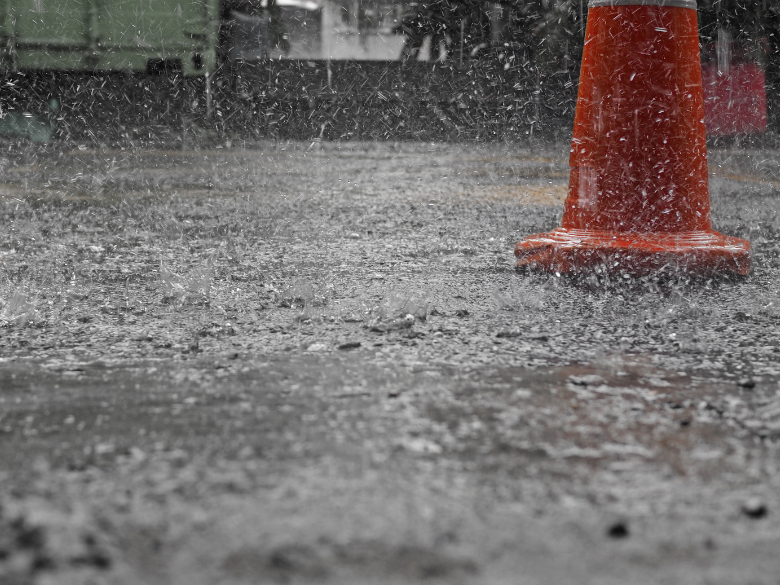Working safely in adverse weather conditions
Oct 06, 2025

NZ weather changes fast and when it does so do the hazards on your site. Strong winds, extreme temperatures, and heavy rain can quickly lead to slips, trips, heat stress, damaged gear or vehicle accidents.
Work doesn’t always stop when adverse weather rolls in, so it’s important to know what to do to keep your workers safe. However, safety must come first, so if conditions become unsuitable or too dangerous, work should stop until it is safe to continue.
Weather checks and inspections
When adverse weather occurs, it’s important for you to inspect your workplace.
- Heavy rain – Identify all wet or muddy surfaces, platforms, and walkways that may be in use, as these can quickly become slip and trip hazards. Implement controls such as drainage, mats, gritting, or signage to reduce risk.
- Strong winds – Check that all materials have been properly stacked and secured to prevent them from falling or blowing away.
- Fall protection – Reinforce the importance of fall protection during wet and windy conditions. Ensure guardrails, harnesses, and anchor points are in place and suitable for the conditions.
- Extreme temperatures – Identify risks from heat and cold, such as heat stress or hypothermia. Ensure workers have regular breaks, access to shade or warm shelters, and adjust work schedules or tasks to reduce exposure.
To ensure your site is safe, complete a Site Review using your HazardCo App. If you are closing the site, you can use our handy Site Security Checklist to make sure the site is left in a safe condition.
Adverse weather driving accidents
Vehicle accidents don’t just happen on the roads; they can also happen within the work site. Highlight to your team that driving rules for the road also apply to your workplace, and it’s important that they take care while operating work vehicles and equipment. To make sure your vehicles and plant are safe before use:
- Complete a Vehicle Checklist or Pre-Start before use.
- Slow down and keep extra distance in wet or slippery conditions.
- Avoid operating vehicles or plant if conditions are too hazardous.
Watch the weather
The last thing you need is for the weather to catch you by surprise. Keep an eye on the weather forecast so your workers can:
- Prioritise tasks that could be affected.
- Make sure they have the right gear.
- Plan for possible stoppages.
A quick weather briefing at your toolbox talk keeps everyone prepared.
The right PPE makes a difference
Be vigilant when ensuring that workers are wearing proper PPE and suitable clothing when adverse weather conditions are present.
- Safety helmets and hard hats should be worn where applicable to protect workers in the case of a fall, as well as from falling objects. Using liners under headgear is a great way to stay warm and keep body heat from escaping. Use chin straps to avoid safety headgear falling off in windy conditions.
- Safety glasses and goggles can be treated with anti-fog spray to prevent vision from becoming obstructed.
- Gloves need to be carefully selected to ensure that workers still have a good range of movement when working with tools and equipment.
- Waterproof boots with non-slip soles should be worn along with two layers of socks to keep moisture away from the skin.
By ensuring that PPE is properly selected, fitted, and maintained, you can significantly reduce the risks associated with adverse weather. Correct PPE not only reduces weather-related risks but also supports comfort and productivity, allowing work to continue safely.
Include adverse weather in your safety plans
Adverse weather is a real workplace hazard that increases the risk of slips, trips, falls, and other injuries. Include it in your hazard register and safety plans, make sure workers know they can stop work if it’s unsafe, and encourage reporting of any incidents or near misses.
Plan ahead, gear up, and put safety first so your crew stays safe, no matter the weather.












